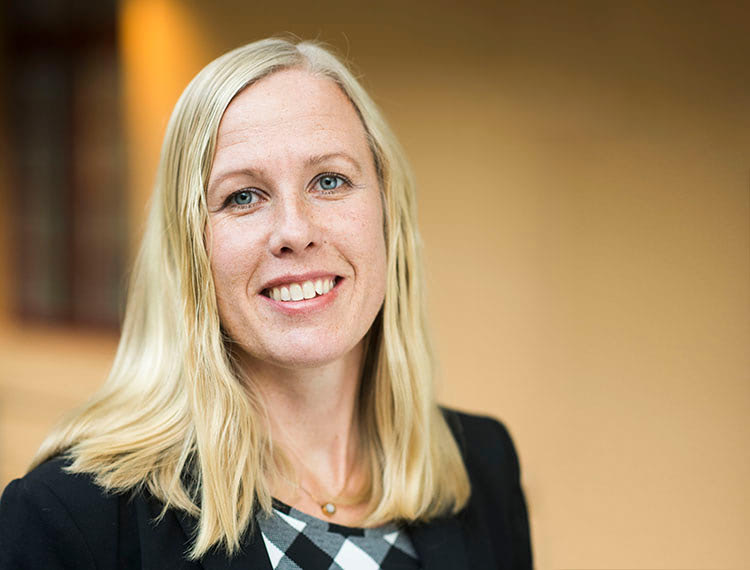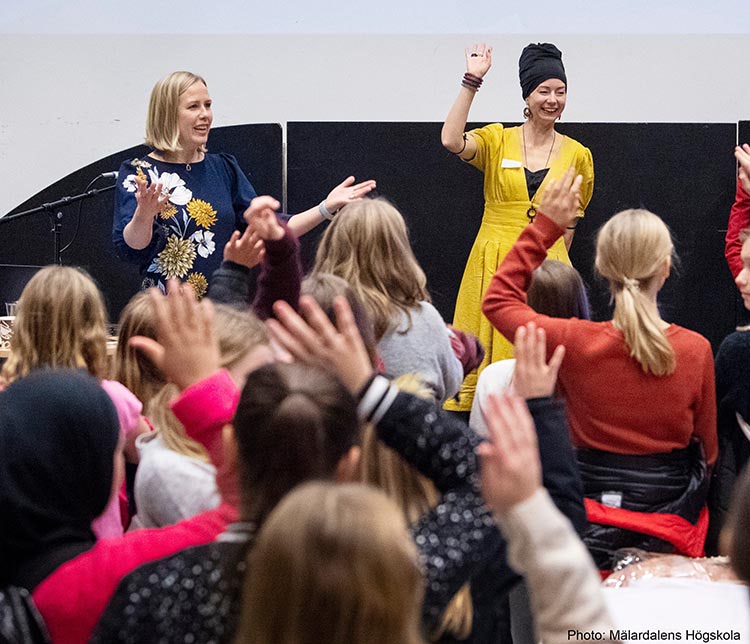What is preventing girls from entering this growing sector, with significant career opportunities?

How can we encourage greater representation in engineering and science?
Female engineers have accomplished incredible feats over the years, from Mary Anderson who brought us the windscreen wiper and Emily Roebling, who is best known for her contribution to the construction of the Brooklyn Bridge, to Vera Sandberg, Sweden’s first female engineer, and a particular inspiration for me in the work I do.
The number of Women and BAME groups employed in engineering and science roles across the globe is startlingly low. Yet a growing, changing economy is generating ever more demand for engineers from all walks of life. Redressing the balance and ensuring greater representation is a challenge we must tackle now if we are to reverse the trend and benefit from the skills and experience these groups bring.
Women account for just 28% of engineering graduates in the world, according to a report published in February 2021 by UNESCO, entitled ‘The race against time for a more intelligent development.’
What’s more, many OECD member countries don’t even hit that figure, with just 26% in France, 20.4% in the US and 14% in Japan.
Data from the Women’s Engineering Society reveals a similarly dismal picture in the UK, with women representing just 12% of the engineering workforce.
This lack of female representation means we are denied the skills and experiences of a group that make up some 50% of the population.
On so many levels, it is imperative that we strive for a better balance – not only in relation to gender, but across all other areas such as ethnicity and age – so that we have equal representation.
And in the field of innovation, it’s perhaps even more important to have all groups working together to solve some of the biggest challenges facing us as a society.
Opportunity awaits
Conversely, demand in the European market alone for STEM skills is expected to triple from 8% to 23% of the workforce between 2015 and 2025, fueled by a variety of factors not least the fourth industrial revolution or Industry 4.0. AI, robotics, nanotechnology, 3D printing, genomics, biotechnology and cognitive sciences are all growing whilst sadly, women are still a minority in Industry 4.0 in most countries.
So, what is preventing girls from entering what is clearly a growing sector, with significant career opportunities?
Having worked in engineering at Volvo CE and within the technology function since 2006 in a number of roles, latterly as Research Strategy Manager in the Advanced Engineering Department, I’ve been fortunate enough to be involved in a wide variety of exciting projects and can wholeheartedly say that engineering is a truly rewarding career path. Today, I specialize in collaborating with partner organizations with a focus on sustainable development. Unfortunately, we don’t get enough female candidates applying for engineering and technology roles. This is not just a problem for us at Volvo CE, it is a societal problem for us all. Without equal representation, we will see technology solutions being created by men, for men.
Clearly more needs to be done to break down barriers and highlight role models for potential female engineers to make it look an attainable and aspirational industry. And new research has revealed that this needs to start from a much younger age than had previously been considered.
Reaching out to girls at a young age

Anna with Ulrika Sultan, researcher at Linkoping University, at a Volvo CE Vera innovation workshop in 2019
Researcher, Ulrika Sultan from Linköping University, has focused her work on identifying why girls lose interest in technology education as they get older. Using different methods, such as literature reviews, observations, interviews and theories, Ulrika’s work aims to understand why girls identify as non-technical as they get older. Her research has revealed that in many Western countries, there’s a tipping point at around 10 years old. Prior to this, girls can and do strive to be their best, utilize their problem-solving skills and show off their intellect, but just one year later, this all changes and they shy away from revealing their best.
Volvo CE, in partnership with Mälardalen University (MDH), is reaching out to younger girls through its Vera initiative in an attempt to reverse this trend and inspire young girls to recognize and celebrate their abilities in science and technology. I am delighted to be co-managing the program, along with San Giliyana and Natalie Agerskans from Mälardalen University.
Vera is a series of innovation workshops, aimed at girls aged 10 and over, which challenges them to work together to find technological solutions to real-life scenarios, such as how to make traffic safer and recycling more fun.
By reaching out to these girls, providing mentoring and support, and showing them real-life female engineers, the perception of STEM subjects has been boosted. The results from the workshops have been really encouraging, with girls showing a stronger interest in these subjects after taking part. We believe this is one of many important ways in which we can help to reverse the trend.
Volvo CE has led school collaboration initiatives for many years, bringing together budding female engineers across different age ranges and helping to educate them about the skills they need to succeed. We see it as an opportunity not only to encourage women to consider a career in the industry, but also a chance to act as mentors, offering support and guidance.
Providing a supportive organizational culture
Retaining female engineers is another challenge facing the industry. Data from the Society of Women Engineers reveals that in the US only 30% of women who earn a Bachelor’s degree in engineering are still working in the sector 20 years later. 30% of the women who have left the profession cite organizational climate as the reason.
At Volvo CE, the culture is very supportive and female talent is nurtured. There is a network for women, supported by top management, which provides opportunities for females to share experiences and encourage, inspire and motivate one another. Seminars are hosted and different speakers are invited to talk on a variety of different topics. This has created a really valuable professional network and strong community.
There’s also a comprehensive role model structure throughout the organization, so that everyone always has a voice and talent ahead of them to help nurture and guide them on their own successful career paths.
Having more women employed in engineering roles also paves the way for greater diversity in other areas, encouraging entrants from different ethnic, background and ability groups, something society needs for development to be most effective.
It is imperative we correct this gender imbalance. It’s not just women who have a part to play, men also have an important role here, as well as the desire for better gender balance. But if women are to seize on the opportunities open to them, there needs to be a level playing field in terms of access to enablers, such as education and information and we need to grow perceptions of engineering as a desirable and prestigious career that could one day play an important role in delivering positive societal change.
Anna Sannö, Research Strategy Manager at Volvo Construction Equipment (Volvo CE)











Responses